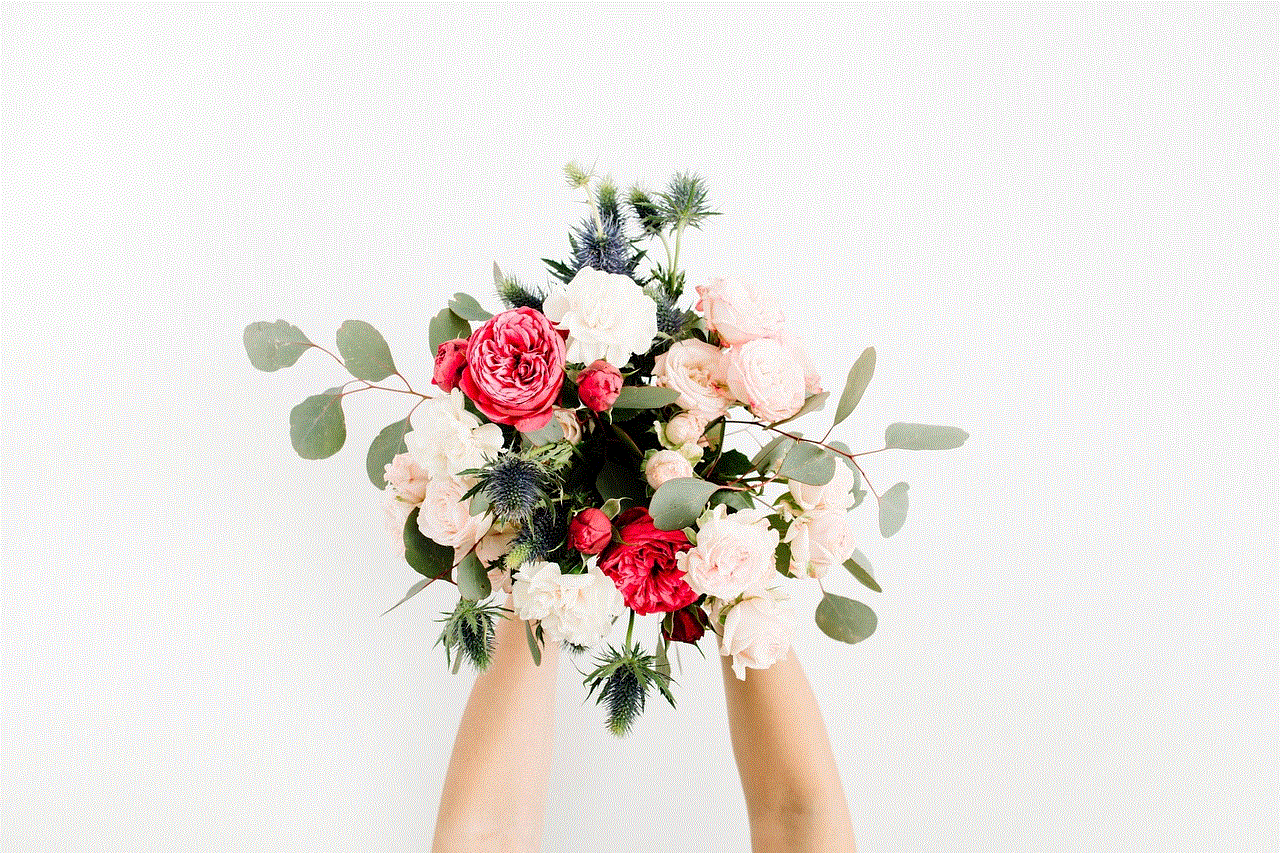what happened to mylol
Title: The Rise and Fall of Mylol: Unveiling the Controversial Teen Social Networking Platform
Introduction:
In the ever-evolving world of social media, platforms come and go, each with their unique features and target audiences. One such platform that gained significant attention and controversy was Mylol. Initially launched as a teenage dating site, Mylol aimed to connect young individuals worldwide. However, its journey was far from smooth sailing. This article delves into the rise and fall of Mylol, exploring its inception, features, controversies, and eventual demise.
Paragraph 1: The Birth of Mylol
Mylol was founded in 2008 by Australian entrepreneur Graham Jones. The platform aimed to provide a safe and secure space for teenagers to interact, make friends, and potentially find romantic partners. With its initial launch, Mylol quickly gained popularity among teenagers globally, capitalizing on the rising trend of social networking platforms.
Paragraph 2: Features and Functionality
Mylol offered several features and functionalities that made it appealing to its target audience. The platform allowed users to create profiles, upload pictures, and connect with other users through messaging and chat rooms. It also incorporated a matchmaking feature that suggested potential matches based on users’ interests, location, and age.
Paragraph 3: Controversies and Safety Concerns
Despite its noble intentions, Mylol soon found itself mired in controversies and safety concerns. The platform’s open nature and lack of stringent verification measures made it vulnerable to abuse. Reports of cyberbullying, explicit content sharing, and sexual predators exploiting vulnerable teenagers began to surface, raising alarm bells among parents and authorities.
Paragraph 4: Legal Ramifications and Criticism
As the controversies surrounding Mylol escalated, legal authorities and child protection organizations started taking notice. Governments in various countries, including the United States, Canada, and the United Kingdom, expressed concerns about the platform’s potential dangers to minors. Mylol faced severe criticism for its inadequate safety measures and perceived inability to address the growing issues plaguing its user base.
Paragraph 5: Attempts to Address Safety Concerns
Under mounting pressure, Mylol attempted to improve its safety measures by introducing stricter age verification protocols, content moderation, and reporting mechanisms for users to flag inappropriate behavior. However, these efforts were deemed insufficient, as the platform struggled to keep up with the evolving tactics of online predators and cyberbullies.
Paragraph 6: Media Attention and Public Outrage
The controversies surrounding Mylol garnered significant media attention, amplifying public outcry against the platform. News outlets and concerned parents shared stories of the platform’s negative impact on teenagers’ mental health, privacy breaches, and instances of grooming and exploitation. This heightened scrutiny further fueled the public’s demands for Mylol to be shut down.
Paragraph 7: The Decline and Demise
As the platform’s reputation continued to deteriorate, Mylol experienced a decline in its user base. The negative publicity and increasing focus on its safety concerns led to a loss of trust among teenagers and their parents. Competing platforms with better safety features began gaining popularity, further eroding Mylol’s market share. Eventually, in 2019, Mylol announced its closure, marking the end of its controversial journey.
Paragraph 8: Lessons Learned and Industry Impact
The rise and fall of Mylol serve as a cautionary tale for social networking platforms targeting vulnerable demographics. The platform’s downfall exposed the need for robust safety measures, age verification protocols, and efficient content moderation systems. Industry regulators and policymakers took cues from Mylol’s controversies to enact stricter regulations and guidelines to protect minors in the digital realm.
Paragraph 9: The Ongoing Battle against Online Exploitation
While Mylol may have ceased operations, the battle against online exploitation and the protection of vulnerable individuals continues. Governments, law enforcement agencies, and social media platforms are continuously collaborating to enhance safety measures, raise awareness, and prosecute those who engage in illegal activities targeting minors. The lessons learned from Mylol’s demise contribute to the ongoing efforts to create a safer online environment for teenagers.
Paragraph 10: Moving Forward – The Future of Teen Social Networking
The downfall of Mylol paved the way for the emergence of new social networking platforms catering exclusively to teenagers, with a strong emphasis on safety and user protection. These platforms prioritize age verification, implement robust content moderation systems, and provide comprehensive reporting mechanisms to address safety concerns promptly. By learning from the mistakes of Mylol, these new platforms aim to create a positive and secure online space for teenagers to connect, share, and grow.
Conclusion:
Mylol’s story is a stark reminder of the risks associated with social networking platforms targeting vulnerable demographics. Its rise and fall shed light on the importance of prioritizing user safety, implementing stringent verification measures, and continuously adapting to the evolving threats of the digital world. Through the lessons learned from Mylol’s controversies, we move forward with a collective determination to create a safer and more responsible online environment for teenagers.
a spooky halloween night drawing game
Title: A Spooky Halloween Night Drawing Game: Unleash Your Creativity!
Introduction (150 words)
Halloween is a beloved time of the year, filled with spooky decorations, costumes, and an air of mystery. Celebrating the spirit of Halloween, a spooky night drawing game can be a perfect way to engage your creativity and immerse yourself in the Halloween season. This article will explore the excitement, creativity, and fun that can be experienced through a Halloween night drawing game.
1. Embracing the Spooky Atmosphere (200 words)
During Halloween, the atmosphere is filled with an eerie and mysterious vibe. By engaging in a spooky night drawing game, you can embrace this atmosphere and let your imagination run wild. The game can involve drawing various Halloween-themed elements such as witches, pumpkins, ghosts, and haunted houses. With dim lighting and eerie music playing in the background, you can transform your drawing space into a haunted art studio.
2. Building Halloween-Themed Characters (200 words)
A Halloween night drawing game provides the opportunity to create unique and captivating characters. You can sketch witches with warts, pointy hats, and broomsticks or conjure up ghosts with flowing sheets and glowing eyes. The game encourages you to explore different facial expressions, poses, and outfits to bring your spooky characters to life. It’s a chance to let your creativity shine and create memorable Halloween-inspired characters.
3. Transforming Ordinary Objects (200 words)
In a Halloween night drawing game, everyday objects can be transformed into extraordinary Halloween-themed elements. For example, a simple pumpkin can become a jack-o’-lantern with a wicked grin or a haunted house can be adorned with creepy cobwebs and bats. By incorporating these transformed objects into your drawing, you can add an extra layer of spookiness to your artwork while showcasing your imagination.



4. Exploring Different Art Styles (200 words)
Halloween night drawing games offer an excellent opportunity to explore various art styles. You can experiment with dark and gothic art styles, adding depth and shadows to create a haunting effect. Alternatively, you can opt for a more playful and cartoonish style, incorporating vibrant colors and exaggerated features. By exploring different art styles, you can expand your artistic skills and find the one that best suits your Halloween-inspired creations.
5. Collaborative Halloween Drawing Games (200 words)
Collaborative drawing games can make the Halloween night drawing experience even more enjoyable. Gather a group of friends or family members and take turns contributing to a collective Halloween-themed artwork. Each participant can add their own spooky elements, building upon the ideas of others. This collaborative approach not only enhances creativity but also fosters a sense of togetherness and shared Halloween spirit.
6. Incorporating Storytelling into Your Drawings (200 words)
Halloween is a time when stories of witches, ghosts, and haunted places come to life. In a Halloween night drawing game, you can use your artwork as a storytelling medium. Let your imagination guide you as you create illustrations that depict spooky tales or eerie scenes. Your drawings can narrate a haunted house’s history, the origin of a witch’s curse, or a ghostly encounter. By merging art and storytelling, you can create a captivating Halloween experience.
7. Hosting a Halloween Drawing Game Party (200 words)
Why not take the Halloween night drawing game to the next level by hosting a party? Invite friends, family, or fellow art enthusiasts to join in the spooky fun. Set up a dedicated drawing area with Halloween-themed decorations, provide art supplies, and encourage participants to unleash their creativity. You can even organize a friendly competition or showcase event to display everyone’s artwork. A Halloween drawing party is an excellent way to connect with others, share artistic ideas, and celebrate the spooky season.
8. Incorporating Technology and Digital Art (200 words)
For those who prefer digital art, Halloween night drawing games can be adapted to digital platforms. Using software or apps specifically designed for digital drawing, you can create Halloween-themed artwork on a tablet or computer . These platforms offer a wide range of tools, brushes, and effects to enhance your creations. Additionally, you can share your digital artwork online, join digital art communities, and participate in Halloween-themed challenges or contests.
9. Inspiring Others with Your Halloween Artwork (200 words)
Your Halloween night drawings can serve as a source of inspiration for others. Share your artwork on social media platforms or art-sharing websites to showcase your creativity and ignite the Halloween spirit in others. Seeing your artwork can encourage others to engage in their own Halloween drawing games and embrace their artistic side. The exchange of ideas and inspiration through art can create a vibrant Halloween community worldwide.
10. Preserving Halloween Memories Through Art (200 words)
Halloween night drawing games allow you to capture memories and preserve them through art. Whether you draw alone or with loved ones, your artwork becomes a tangible representation of the Halloween season. These drawings can be collected and displayed year after year, reminding you of the creative moments shared during Halloween nights. Each artwork becomes a cherished memory and a testament to the joy and spirit of Halloween.
Conclusion (150 words)
Engaging in a spooky Halloween night drawing game provides a unique and exciting way to celebrate the Halloween season. From embracing the spooky atmosphere to building Halloween-themed characters and exploring different art styles, the game offers endless creative opportunities. Whether you choose to draw alone, with friends, or in a collaborative setting, the Halloween drawing game fosters imagination, storytelling, and artistic growth. So, gather your art supplies, dim the lights, and let your creativity flow as you embark on a thrilling Halloween night drawing game. Unleash your imagination and create memorable artwork that captures the essence of Halloween. Get ready to be spooked and inspired by the magic of this spooky night drawing game!
how to see who blocked me on twitter
Title: How to Find Out Who blocked you on Twitter : A Comprehensive Guide
Introduction (approx. 150 words)
———————
Twitter is a popular social media platform that allows users to connect, interact, and share information with others. However, sometimes interactions on Twitter can turn sour, resulting in users blocking others. If you suspect that someone has blocked you on Twitter, you might be wondering how to confirm your suspicions. In this comprehensive guide, we will explore the methods and techniques you can use to find out who has blocked you on Twitter.
1. Understanding Twitter Blocking (approx. 200 words)
——————————
Before delving into the methods of identifying who has blocked you on Twitter, it’s crucial to understand how blocking works on the platform. When a user blocks you on Twitter, it means they no longer want to see your tweets, retweets, or mentions. Additionally, it prevents you from following them or engaging with their content. Twitter’s blocking feature is designed to provide users with control over their online experience and protect them from harassment or unwanted interactions.



2. Signs that Indicate You Have Been Blocked (approx. 250 words)
——————————-
While Twitter doesn’t explicitly notify users when they are blocked, several signs can help you determine whether someone has blocked you. Some common indicators include not being able to view the blocked user’s tweets, retweets, or mentions. Additionally, you may find that you are unable to follow the user or view their profile. However, it is essential to note that these signs do not guarantee that you have been blocked, as there could be other reasons for these limitations.
3. Utilizing External Services (approx. 300 words)
—————————
To identify who has blocked you on Twitter, you can rely on external services specifically designed for this purpose. Several websites and apps offer features that allow you to check if someone has blocked your Twitter account. These services usually require you to provide your Twitter username or log in using your Twitter account. Upon verification, they will compare your account against a list of blocked users and provide you with the necessary information.
4. Third-Party Twitter Tools (approx. 300 words)
—————————-
In addition to external services, there are several third-party Twitter tools that can assist you in identifying blocked accounts. These tools often provide advanced features that allow you to analyze your Twitter account and interactions. Some tools can scan your followers’ list and detect users who have blocked you. They may also provide additional data on your followers’ engagement and activity, helping you gain insights into your Twitter audience.
5. Using Twitter’s Advanced Search (approx. 250 words)
—————————
While external services and third-party tools are helpful, you can also use Twitter’s native features to identify blocked accounts. Twitter’s advanced search functionality allows you to find tweets from specific users. By searching for a user’s tweets, you can determine whether they have blocked you by checking if their tweets are visible in the search results. However, this method requires some manual work and may not always provide definitive results.
6. Seeking Confirmation from a Mutual Friend (approx. 200 words)
—————————-
If you suspect that someone has blocked you on Twitter, another way to confirm your suspicions is by asking a mutual friend who follows both you and the suspected blocker. Mutual friends can observe if the suspected blocker’s tweets appear in their timeline, further validating whether you have been blocked or not. However, it’s important to approach this method with caution and respect the privacy of all parties involved.
7. Analyzing Engagement Metrics (approx. 300 words)
—————————-
Analyzing your engagement metrics on Twitter can also help you determine if someone has blocked you. Decreases in the number of likes, retweets, or replies from a specific user may indicate that they have blocked you. Additionally, if you notice a significant drop in your follower count and suspect that a particular user is responsible, it is possible that they have blocked you.
8. Directly Contacting the Suspected Blocker (approx. 200 words)
—————————-
If you have strong reasons to believe that someone has blocked you on Twitter, you can try directly contacting them to confirm. Send them a polite and friendly direct message, asking if they have blocked you. However, remember that this approach might not always yield a response, and it’s essential to respect the other person’s decision if they choose not to answer.
9. Accepting the Reality and Moving On (approx. 150 words)
—————————-
If you have exhausted all the methods mentioned above and are still unsure whether someone has blocked you on Twitter, it may be time to accept the reality and move on. Dwelling on the possibility of being blocked can be counterproductive and may negatively impact your overall Twitter experience. Focus on engaging with your followers, creating valuable content, and building positive connections on the platform.



Conclusion (approx. 150 words)
———————
Discovering if someone has blocked you on Twitter can be a challenging task, as the platform doesn’t provide explicit notifications for this action. However, by utilizing external services, third-party tools, Twitter’s advanced search, engaging mutual friends, analyzing engagement metrics, or contacting the suspected blocker directly, you can gain a clearer understanding of whether you have been blocked. Remember, it’s crucial to approach these methods respectfully and maintain a positive online presence. Ultimately, if you find that someone has blocked you, it’s essential to respect their decision and focus on fostering positive interactions with others on Twitter.
